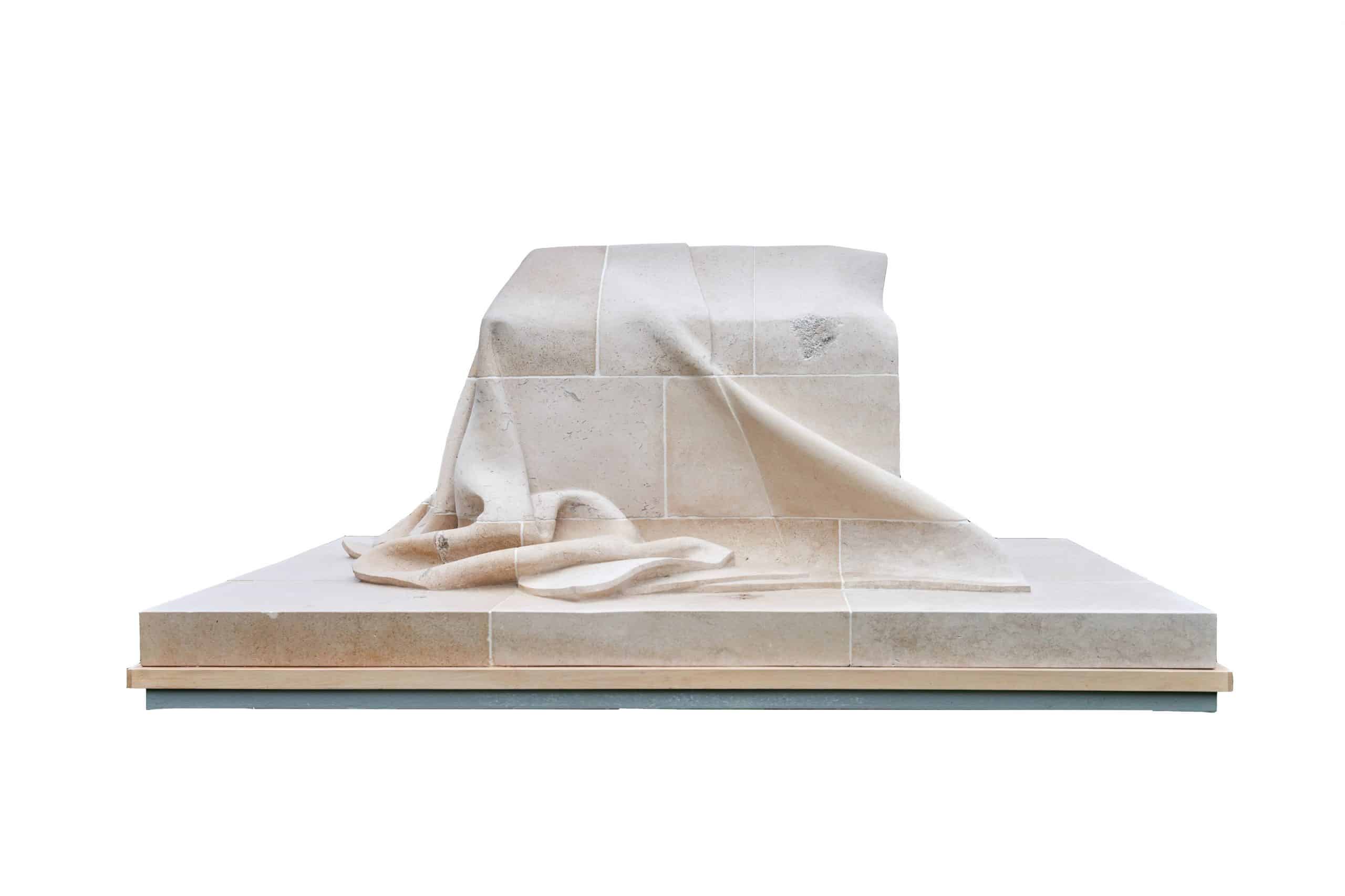|

By definition, a camp is a place of temporary residence – built of huts, tents, or other structural forms, typically used by soldiers, refugees, or travellers. For this installation, Lucy Tomlins presents a series of shelters made from mycelium, Portland stone and cob, offering an innovative way to bring together concerns around sustainable development through the material explorations and platform of contemporary sculpture.
Three models of shelter-like forms, each expertly crafted from natural materials are presented as if tests, works-in-progress, or models for future evolution. And so, they are. The artwork is in a state of flux. Formed from natural materials with varying properties and states of permanence, throughout the duration of their exhibition these materials will continue to transform, the results as yet unknown.
Developed for initial installation at Liverpool Parish Church, Liverpool, before touring to Metropolis, Coventry, ‘Camp, Do We Go Around the Houses, or Do Houses Go Around Us?’ is a technically ambitious new body of work that seeks to investigate how artists might use materials to underscore the key questions of sustainability in contemporary society. The title of this project derives from Mario Merz’s, ‘Igloo, Do We Go Around Houses, or Do Houses Go Around Us?’, (1977, reconstructed 1985), with this reference acting as a departure point from which to build significant dialogues around sculpture and its material agency. Drawing on a range of production techniques, this installation combines sculptural and architectural elements, bringing together traditional practices such as stone-carving, with cutting edge techniques including mycelium cultivation and digital modelling, to examine sculpture as a space of possibility and transformation.
Download press release
https://www.pangaeasculptorscentre.com/wordpress2016/wp-content/uploads/2022/05/PRESS-RELEASE_Camp_Lucy-Tomlins_April-2022.pdf
Pangaea Sculptors’ Centre and the artist recognise and highlight that it isn’t just one artist that makes these projects happen. This work is produced by artist Lucy Tomlins in collaboration with a skilled team of practitioners and specialists, including Mike Gregory & Luke Twigger (PSC), Oksana Bondar & Candyce Dryburgh (Biohm), and stonemason Adeline Wartner.
Also Exhibited At
Liverpool Parish Church (Our Lady and St. Nicholas), Old Churchyard, Chapel Street, Liverpool, L2 8TZ
Friday 18 February – Monday 18 April 2022
RA Summer Exhibition 2022
Pangaea Sculptors’ Centre
Daimler Powerhouse Unit 4,
Sandy Lane Business Park,
Sandy Lane, Coventry, CV1 4DQ
Pangaea Sculptors’ Centre
Community Interest Company 08424651
VAT Registration No.: GB 3707 412 08
Registered in England and Wales